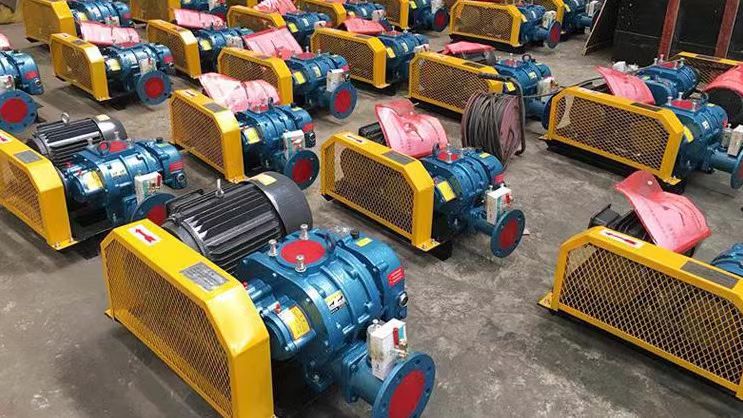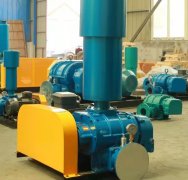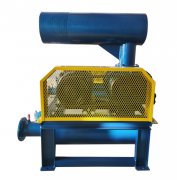The sealing methods of Roots blower mainly include labyrinth seal, packing seal, expansion ring seal, and mechanical seal. The following is a specific introduction:
Maze seal:
Principle: A non-contact dynamic seal that utilizes fluid flow through a series of throttling gaps and expansion cavities to create a throttling effect on the working medium and limit leakage.
Features: Unrestricted by speed and temperature, simple structure, easy maintenance, long service life. Appropriately increasing the number of sealing teeth can be used for high-pressure gas sealing, but high machining accuracy is required, and friction and wear may occur during poor operation.
Application: Suitable for conveying air, with restricted use when transporting toxic, flammable, and explosive gases.
Packing seal:
Principle: Fill the leakage channel with filler to prevent leakage. Commonly used packing materials include root packing, molded PTFE packing, and skeleton oil seal packing.
Features: Simple structure, easy assembly and disassembly, low cost, but it belongs to contact type sealing, which is prone to shaft wear.
Application: Widely used in industries such as fertilizer plants, especially in scenarios where the medium is not clean.
Expansion ring seal:
Principle: Place the elastic ring with a cut into the sealing groove, and use elasticity to make the outer circle tightly adhere to the shell. Gas leaks through the gap between the ring and the groove. After high-pressure gas enters the gap, the sealing effect is strengthened.
Features: Contact type seal, good sealing effect but requires grease lubrication, new special material expansion ring can be lubricated without lubrication.
Application: Suitable for occasions that require strong sealing performance.
Mechanical seal:
Principle: Composed of a stationary ring, a rotating ring, elastic or magnetic components, a rotating ring transmission component, and an auxiliary sealing ring, the function is achieved by utilizing the fitting surface and auxiliary sealing of the rotating ring and the stationary ring that rotate relative to each other.
Features: Reliable operation, low leakage, long lifespan, automatic compensation for end face wear, low power loss, but complex structure, high precision requirements, expensive price, and inconvenient maintenance.
Application: Used in occasions with high sealing requirements, such as conveying clean flammable, explosive, and toxic gases. Divided into single mechanical seals (K-type) and four mechanical seals (N-type), N-type can achieve "zero leakage" and is particularly suitable for gases that have a deteriorating effect on oil.



